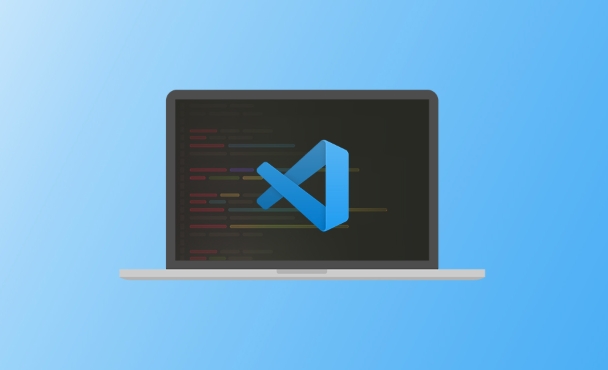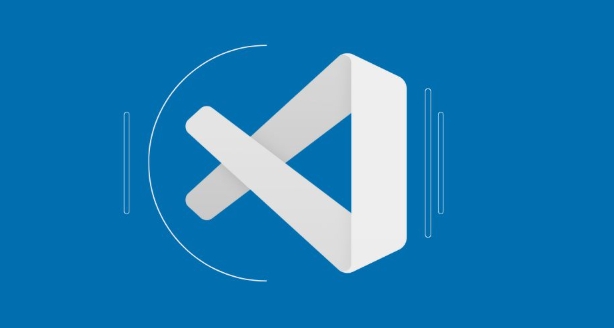How to install VSCode extensions from command line on Linux
Jul 13, 2025 am 12:05 AMYes, you can install VSCode extensions from the Linux command line by first ensuring the VSCode CLI is available, either by verifying the code command or creating a symlink if necessary. Next, find the extension ID from the Visual Studio Marketplace, such as ms-python.python for the Python extension. Then, use code --install-extension ms-python.python to install it, optionally specifying a version like ms-python.python@2023.18.1. If dependencies are missing, install them separately upon warning messages, or manually install a .vsix file in restricted environments using code --install-extension /path/to/your-extension.vsix.

Yes, you can install Visual Studio Code (VSCode) extensions directly from the command line on Linux, which is especially handy if you're setting up a development environment quickly or managing multiple machines. Here's how to do it.

Make sure VSCode CLI is available
Before installing extensions via the terminal, check that the code command is available in your shell. This allows you to interact with VSCode from the command line.

If it’s not set up yet, follow these steps:
- On most Linux systems where you installed VSCode via
.debor.rpm, the CLI should already be installed. - If not, you can manually create a symlink:
sudo ln -s /usr/share/code/bin/code /usr/local/bin/code
Once done, test it by running:

code --version
You should see version info printed — that means you’re good to go.
Find the extension ID
To install an extension via the command line, you need its extension ID, which usually looks like publisher.extension-name.
Here’s how to find it:
- Go to Visual Studio Marketplace.
- Search for the extension you want.
- Open its page and look at the URL or details section — the ID will appear there.
For example, the Python extension has the ID: ms-python.python.
Install the extension using the CLI
Once you have the extension ID, use this simple command:
code --install-extension ms-python.python
Replace ms-python.python with whatever extension ID you found earlier.
? Pro tip: You can also include a specific version:
code --install-extension ms-python.python@2023.18.1
This is useful for keeping environments consistent across different machines or CI setups.
Handle dependencies and warnings
Sometimes, an extension might depend on another one. In that case, VSCode will print a warning like:
"The extension 'ms-python.python' depends on extension 'ms-vscode.vscode-js-debug' which is not installed."
In that case, just run the install command again for the missing dependency.
Also, if you're behind a proxy or in an air-gapped environment, you can download the .vsix file manually and install it like this:
code --install-extension /path/to/your-extension.vsix
That’s all it takes to install VSCode extensions from the Linux command line. It’s straightforward once you have the right ID and CLI access.
The above is the detailed content of How to install VSCode extensions from command line on Linux. For more information, please follow other related articles on the PHP Chinese website!

Hot AI Tools

Undress AI Tool
Undress images for free

Undresser.AI Undress
AI-powered app for creating realistic nude photos

AI Clothes Remover
Online AI tool for removing clothes from photos.

Clothoff.io
AI clothes remover

Video Face Swap
Swap faces in any video effortlessly with our completely free AI face swap tool!

Hot Article

Hot Tools

Notepad++7.3.1
Easy-to-use and free code editor

SublimeText3 Chinese version
Chinese version, very easy to use

Zend Studio 13.0.1
Powerful PHP integrated development environment

Dreamweaver CS6
Visual web development tools

SublimeText3 Mac version
God-level code editing software (SublimeText3)

Hot Topics
 How do I pull changes from a remote repository in VS Code?
Jun 13, 2025 am 12:12 AM
How do I pull changes from a remote repository in VS Code?
Jun 13, 2025 am 12:12 AM
TopullchangesfromaremoteGitrepositoryinVSCodewithoutusingtheterminal,useoneofthreemethodsstartingwithaccessingtheSourceControlsidebar.1.OpentheSourceControlsidebar(Ctrl Shift G),clickthethreedots(...),andselect"Pull".2.Usethestatusbarbyclic
 How do I use the 'Find All References' feature in VS Code?
Jun 14, 2025 am 12:03 AM
How do I use the 'Find All References' feature in VS Code?
Jun 14, 2025 am 12:03 AM
The"FindAllReferences"featureinVSCodehelpslocateeveryreferencetoasymbolacrossaproject.Touseit,right-clickonthesymbolandselect"FindAllReferences,"orpressShift F12(Windows/Linux)or? F12(macOS).Ensureyourcursorisontheexactsymbolnamea
 How to set a default formatter in vscode settings?
Jun 27, 2025 am 12:01 AM
How to set a default formatter in vscode settings?
Jun 27, 2025 am 12:01 AM
To set the default formatting tool in VSCode, you must first install extensions of the corresponding language, such as Prettier, Black or ESLint. 1. Open the settings and search for "DefaultFormatter", edit the settings.json file to specify the default formatting tools for each language, such as using "esbenp.prettier-vscode" to handle JavaScript, and "ms-python.black-formatter" to handle Python. 2. Optional global settings, but it is recommended to configure them separately by language. 3. Enable "FormatonSave"
 How do I use the 'Find and Replace' feature in VS Code?
Jun 19, 2025 am 12:06 AM
How do I use the 'Find and Replace' feature in VS Code?
Jun 19, 2025 am 12:06 AM
The best way to make batch modifications in VSCode is to use the Find and Replace feature. 1. Use "Find and Replace" in a single file: Press Ctrl H to open the panel, enter the search and replace content, and click "Replace" or "Replace All". 2. Search across multiple files: Press Ctrl Shift F to open the search tab, expand the replacement section, and select the replacement operation for a single file or entire project. 3. Use advanced options: such as case sensitivity, full word matching and regular expressions for more precise control, such as matching numbers with \d or using capture groups for complex replacements. This feature significantly improves code maintenance efficiency through fast and precise editing.
 How do I use VS Code with React?
Jun 18, 2025 am 12:14 AM
How do I use VS Code with React?
Jun 18, 2025 am 12:14 AM
TooptimizeReactdevelopmentinVSCode,installessentialextensionslikeESLintandPrettierforcodeconsistency,setupanewprojectusingCreateReactAppviathebuilt-interminal,organizefilesmodularlyundersrc/withseparatecomponentsandpagesfoldersforscalability,utilizeE
 How do I download and install VS Code on my operating system?
Jun 24, 2025 am 12:04 AM
How do I download and install VS Code on my operating system?
Jun 24, 2025 am 12:04 AM
TodownloadandinstallVisualStudioCode,firstchecksystemrequirements—Windows10 (64-bit),macOS10.13 ,ormodernLinuxdistributions—thenvisittheofficialwebsitetodownloadthecorrectversionforyourOS,andfollowinstallationstepsspecifictoyourplatform.Beginbyensuri
 How do I view the Git history in VS Code?
Jun 26, 2025 am 12:09 AM
How do I view the Git history in VS Code?
Jun 26, 2025 am 12:09 AM
Viewing Git history in VSCode can be achieved through the built-in Git extension. The specific steps are as follows: 1. Open the Git sidebar on the left, view the list of recent submissions and select a specific submission; 2. View the file modified by the submission and line-by-line differences in the right panel, and right-click the file to perform restore changes and other operations; 3. Right-click the file in the editor and select "Open Timeline", and use the timeline view to view the historical change record of the file. These steps allow you to easily track project changes without relying on external tools.
 How do I change the indentation settings in VS Code (tabs vs. spaces)?
Jun 23, 2025 am 12:05 AM
How do I change the indentation settings in VS Code (tabs vs. spaces)?
Jun 23, 2025 am 12:05 AM
TochangeindentationsettingsinVSCode,openSettingsandtoggle"InsertSpaces"toswitchbetweentabsandspaces.1.Adjusttabsizebysearchingfor"TabSize"andsettingyourpreferredvalue.2.Configurelanguage-specificsettingsbyeditingthesettings.jsonfi






